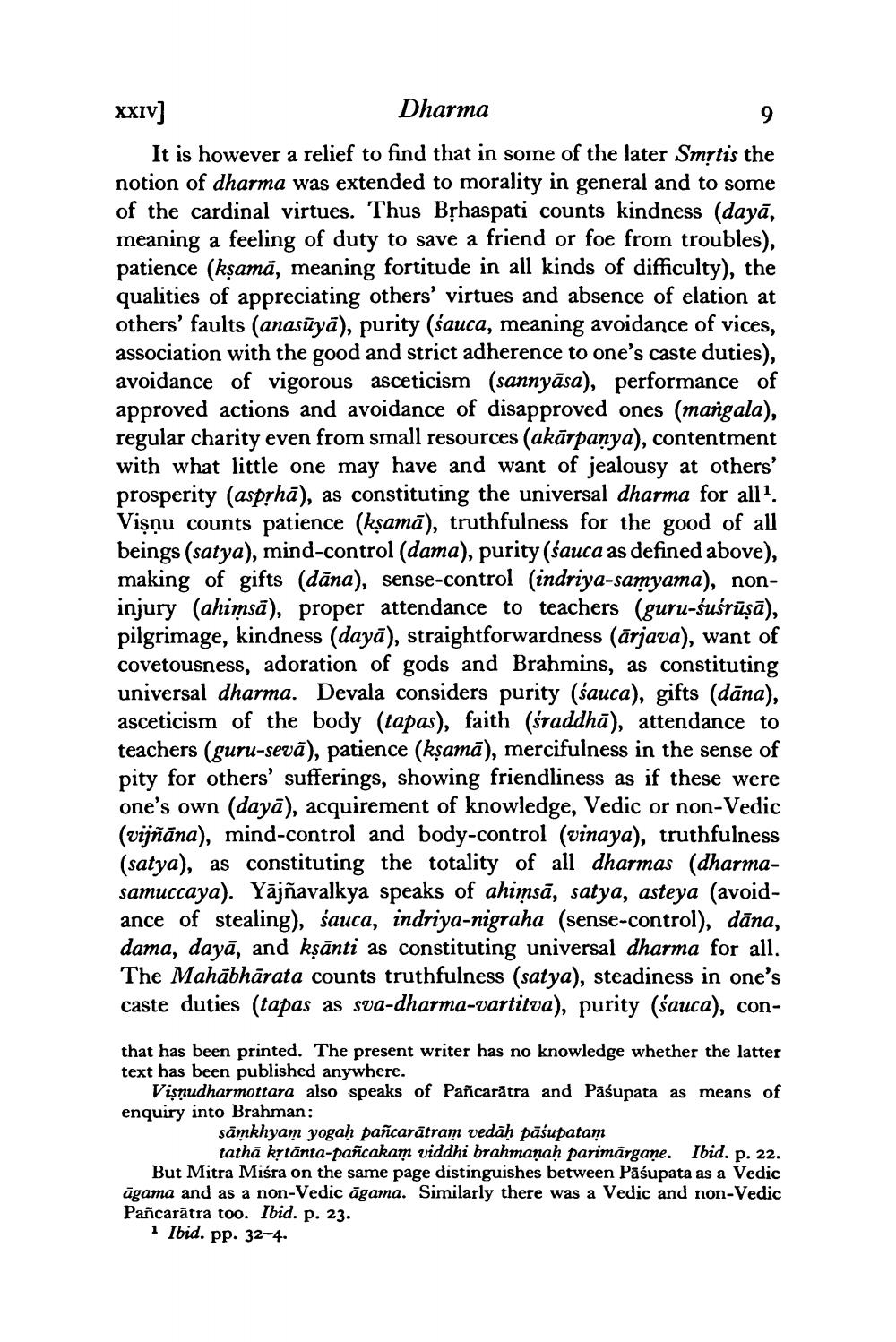________________
XXIV]
Dharma It is however a relief to find that in some of the later Smytis the notion of dharma was extended to morality in general and to some of the cardinal virtues. Thus Bịhaspati counts kindness (dayā, meaning a feeling of duty to save a friend or foe from troubles), patience (kşamā, meaning fortitude in all kinds of difficulty), the qualities of appreciating others' virtues and absence of elation at others' faults (anasūyā), purity (sauca, meaning avoidance of vices, association with the good and strict adherence to one's caste duties), avoidance of vigorous asceticism (sannyāsa), performance of approved actions and avoidance of disapproved ones (mangala), regular charity even from small resources (akārpanya), contentment with what little one may have and want of jealousy at others' prosperity (asp?hā), as constituting the universal dharma for all ?. Vişnu counts patience (kşamā), truthfulness for the good of all beings (satya), mind-control (dama), purity (sauca as defined above). making of gifts (dāna), sense-control (indriya-samyama), noninjury (ahimsā), proper attendance to teachers (guru-suśrūsā). pilgrimage, kindness (dayā), straightforwardness (ārjava), want of covetousness, adoration of gods and Brahmins, as constituting universal dharma. Devala considers purity (sauca), gifts (dāna), asceticism of the body (tapas), faith (śraddhā), attendance to teachers (guru-sevā), patience (kşamā), mercifulness in the sense of pity for others' sufferings, showing friendliness as if these were one's own (dayā), acquirement of knowledge, Vedic or non-Vedic (vijñāna), mind-control and body-control (vinaya), truthfulness (satya), as constituting the totality of all dharmas (dharmasamuccaya). Yājñavalkya speaks of ahimsā, satya, asteya (avoidance of stealing), sauca, indriya-nigraha (sense-control), dāna, dama, dayā, and kşānti as constituting universal dharma for all. The Mahābhārata counts truthfulness (satya), steadiness in one's caste duties (tapas as sva-dharma-vartitva), purity (sauca), con
that has been printed. The present writer has no knowledge whether the latter text has been published anywhere.
Vişnudharmottara also speaks of Pañcarātra and Pasupata as means of enquiry into Brahman:
samkhyam yogah pañcarátram vedāḥ pāśupatam
tathā krtānta-pañcakam viddhi brahmanaḥ parimārgane. Ibid. p. 22. But Mitra Miśra on the same page distinguishes between Pasupata as a Vedic āgama and as a non-Vedic agama. Similarly there was a Vedic and non-Vedic Pancarātra too. Ibid. p. 23.
1 Ibid. pp. 32-4.




